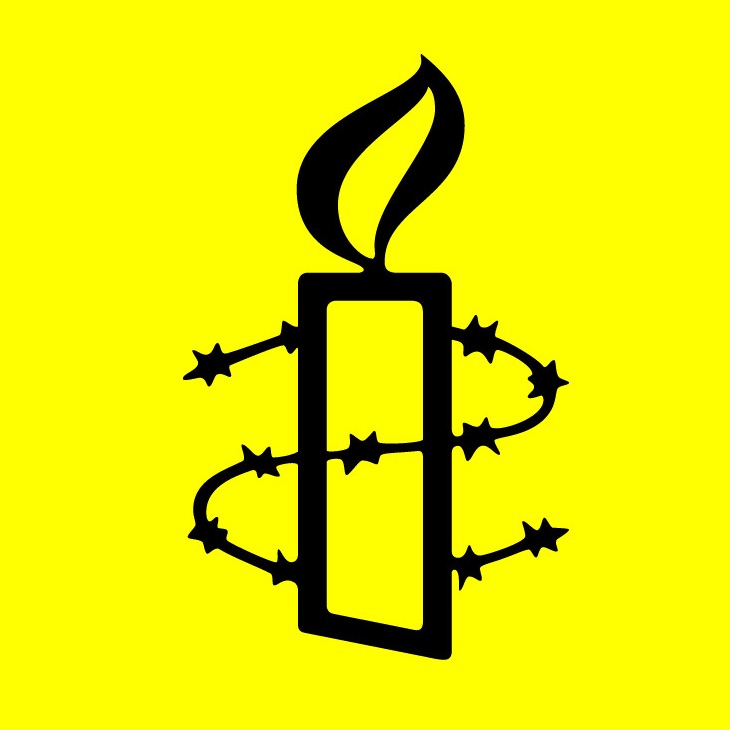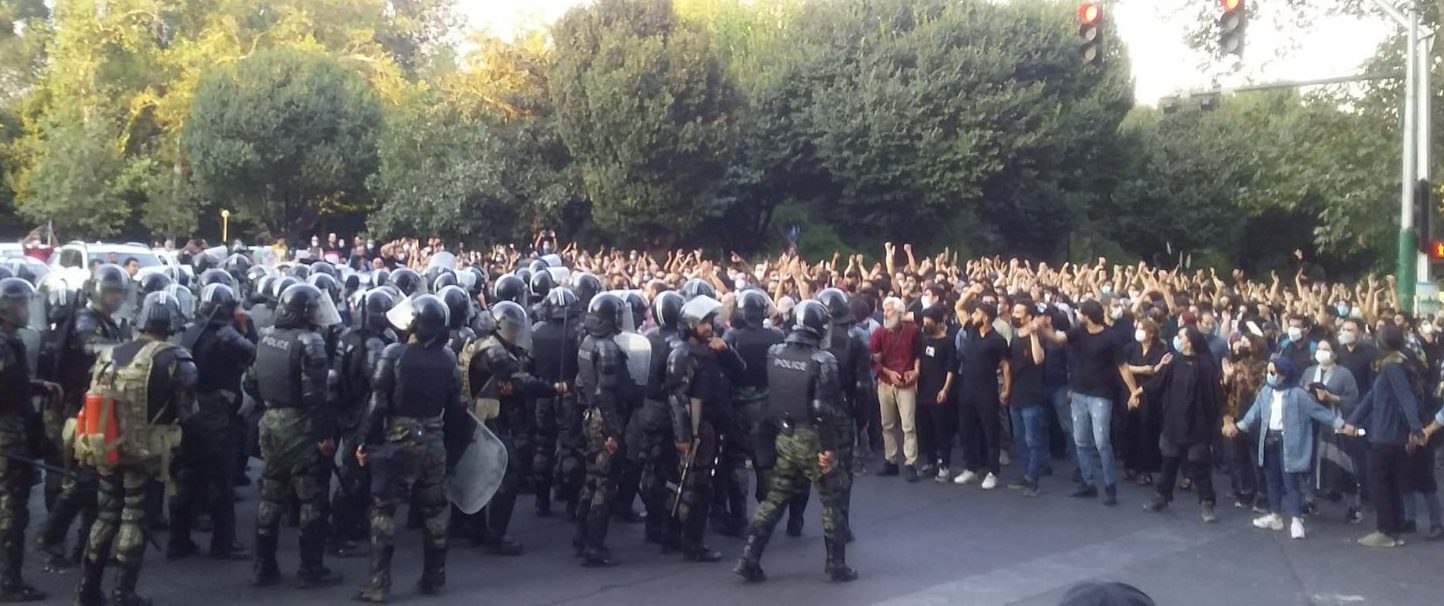World leaders at the UN General Assembly must support calls for the establishment of an independent international investigative and accountability mechanism to address the prevailing crisis of impunity in Iran. Their urgent need for action was demonstrated most recently by the death in custody of 22-year-old Mahsa (Zhina) Amini, and the barrage of gunfire unleashed on protesters which has left at least eight people dead and hundreds injured, Amnesty International said today.
Iranian security forces are violently quashing largely peaceful protests sparked by Mahsa Amini’s death on 16 September, days after her violent arrest by the “morality police” for not complying with discriminatory compulsory veiling laws. Amnesty International collected evidence on the security forces’ unlawful use of birdshot and other metal pellets, teargas, water cannon, and beatings with batons to disperse protesters.
“The global outpouring of rage and empathy over Mahsa Amini’s death must be followed by concrete steps by the international community to tackle the crisis of systemic impunity that has allowed widespread torture, extrajudicial executions and other unlawful killings by Iranian authorities to continue unabated both behind prison walls and during protests,” said Diana Eltahawy, Deputy Director for the Middle East and North Africa at Amnesty International.
“The Iranian authorities’ latest brutal crackdown on protests coincides with Ebrahim Raisi’s speech at the UN. He has been given a platform on the world stage, despite credible evidence of his involvement in crimes against humanity, in a stark reminder of the devastating impact of the repeated failure of UN member states to tackle impunity for grave crimes in Iran.”
Amnesty International has recorded the deaths of six men, one woman and one child during protests on 19 and 20 September in the provinces of Kurdistan (4), Kermanshah (2) and West Azerbaijan (2). Of these, at least four died from injuries sustained from security forces firing metal pellets at close range.
At least two other people have lost sight in one or both eyes. Hundreds more, including children, have sustained painful injuries amounting to torture or other ill-treatment due to the unlawful use of birdshot and other munitions against them.
Iran’s security forces will continue to feel emboldened to kill or injure protesters and prisoners, including women arrested for defying abusive compulsory veiling laws, if they are not held accountable.
Diana Eltahawy, Amnesty International
Shooting to kill and harm
Amnesty International has gathered eyewitness accounts and analysed images and videos of the protests, which reveal a harrowing pattern of Iranian security forces unlawfully and repeatedly firing metal pellets directly at protesters.
Eyewitnesses reported that at least three men (Fereydoun Mahmoudi in Saqqez, Kurdistan province; Farjad Darvishi in Urumieh, West Azerbaijan province; and an unidentified man in Kermanshah, Kermanshah province) and one woman (Minou Majidi in Kermanshah, Kermanshah province) died from fatal injuries caused by metal pellets during protests on 19 and 20 September. Four other victims, Reza Lotfi and Foad Ghadimi in Dehgolan, Kurdistan province; Mohsen Mohammadi in Divandareh, Kurdistan province; and 16-year-old boy Zakaria Khial in Urumieh were killed. Human rights defenders told Amnesty International that according to their sources on the ground, they were shot by security forces but did not have any additional information on the types of munitions used.
Authorities have confirmed the death of three people in Kurdistan province on 19 September and two people in Kermanshah province on 20 September, but, consistent with widespread patterns of denial and cover-up, they attributed responsibility for their deaths to “enemies of the [the Islamic Republic]”.
Consistent eyewitness accounts and video footage leave no doubt that those firing weapons during the protests belonged to Iran’s security forces. Extensive video evidence indicates that protesters in Kermanshah, Kurdistan and West Azerbaijan provinces, where protester deaths were recorded, were mostly peaceful. In some places, some protesters engaged in stone-throwing and damaged police vehicles.* This in no way justifies the use of metal pellets, which is prohibited under all circumstances.
Horrific injuries inflicted on protesters
According to a primary source interviewed by Amnesty International, on 16 September, the first day of protests, security forces in Saqqez fired birdshot at 18-year-old Nachirvan Maroufi at a distance of about 10 metres, resulting in him losing sight in his right eye. The source said security forces also fired birdshot at another young man, 22-year-old Parsa Sehat, who consequently lost sight in both eyes.
On 19 September, mass protests spread from Saqqez to other cities populated by Iran’s oppressed Kurdish minority including Baneh, Dehgolan, Divandareh, Kamyaran, Mahabad, and Sanandaj. Protesters, victims’ relatives, and journalists on the ground told Amnesty International that on that day alone, security forces injured hundreds of men, women, and children by repeatedly firing metal pellets at their heads and chests at close range, indicating intent to cause maximum harm.
An eyewitness to the crackdown in Kamyaran told Amnesty International: “Riot police were repeatedly firing towards people from about 100 metres away… I myself witnessed at least 10-20 people who were shot with metal pellets… Most of them were injured in their backs as they were running away.”
A protester from Mahabad described a similar pattern. He said: “In response to people chanting ‘Women, Life, Freedom’ and ‘Death to the Dictator’, security forces fired weapons loaded with metal pellets, often from a distance of about 20-30 meters… They particularly targeted people in their head.”
A journalist from Baneh similarly told Amnesty International: “Security forces directly shot people in their stomachs and backs at close range… Many of those initially shot at and injured were women because women stood in the front.”
Eyewitness accounts of the security forces’ extensive use of metal pellets are corroborated by videos and photos reviewed by Amnesty International in which sounds of repeated firing are heard and classic spray patterns of birdshot are seen on injured protesters and bystanders.
Gruesome images and eyewitness testimonies obtained by Amnesty International further indicate that in Divandareh, Saqqez and Dehgolan, security forces also fired unidentified munition, causing gaping wounds on protesters’ legs, chests and abdomens.
They include Zana Karimi, a 17-year-old boy who sustained severe leg injuries after being shot in Divandareh, which may require his leg to be amputated and Ehsan Ghafouri who suffered severe kidney injuries after being shot in Dehgolan.
Amnesty International has learnt that most injured protesters and bystanders are not seeking hospital treatment for fear of arrest, which puts them at risk of infection and other medical complications.
Security forces violently arrested several hundred demonstrators, including children, both during the protests of 19 September and subsequent raids carried out during the night. An eyewitness reported seeing scores of arrested protesters in Kamyaran with fractured heads, noses or arms and bloodied bodies.
“Iran’s security forces will continue to feel emboldened to kill or injure protesters and prisoners, including women arrested for defying abusive compulsory veiling laws, if they are not held accountable. With all avenues for accountability closed at the domestic level, the UN Human Rights Council has a duty to send a strong message to the Iranian authorities that those responsible for crimes under international law will not go unpunished,” said Diana Eltahawy.
Background
On 13 September 2022, Iranian Kurdish woman Mahsa Amini was arrested in Tehran by Iran’s so-called “morality” police, who routinely subject women and girls to arbitrary arrest and detention, torture and other ill-treatment for not complying with the country’s discriminatory veiling laws.
According to eyewitnesses, Mahsa Amini was violently beaten while being forcibly transferred to Vozara detention centre in Tehran. Within hours, she was transferred to Kasra hospital having fallen into a coma. She died three days later. Iranian authorities announced investigations while simultaneously denying any wrongdoing. The promised investigation does not meet the requirements of independence as it is due to be carried out by the Ministry of Interior.
* End Note – This press release is focused on the provinces of Kurdistan, Kermanshah and West Azerbaijan where protesters were killed. Amnesty International is investigating the crackdown of protests that have taken place in other cities across Iran since 19 September including Hamedan, Rasht, Shiraz, Tabriz, and Tehran.


